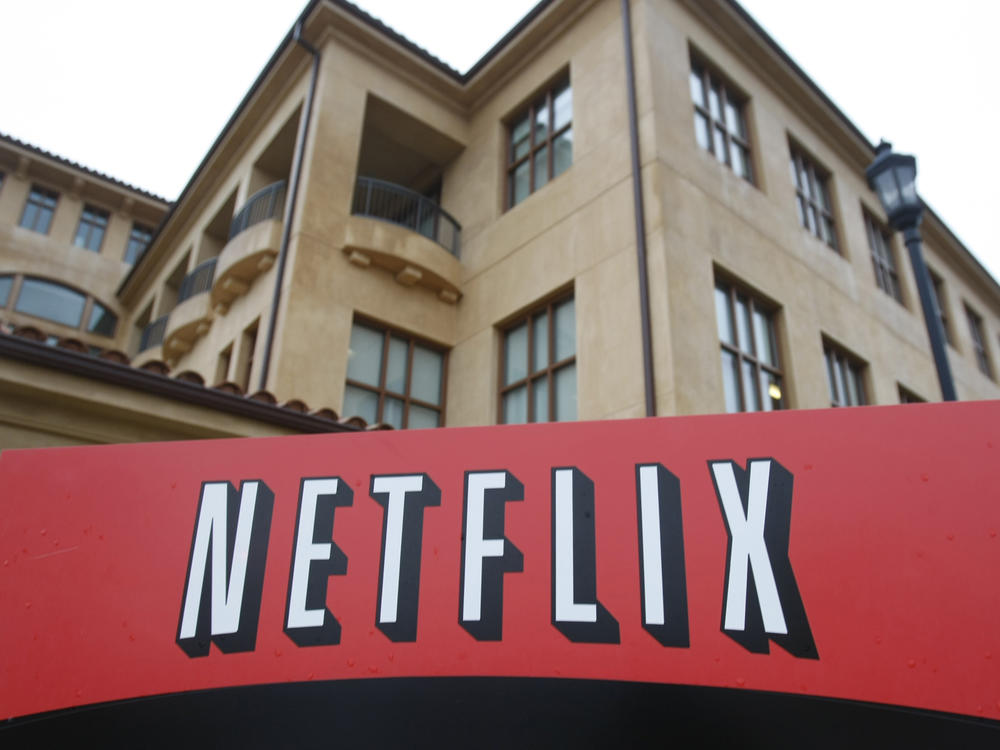Section Branding
Header Content
Netflix loses nearly 1 million subscribers. That's the good news
Primary Content
Updated July 19, 2022 at 6:10 PM ET
The media world – especially in streaming – breathed a huge sigh of relief Tuesday.
That's because Netflix's second-quarter earnings report revealed the company lost 970,000 subscribers. And while that is a big number – the biggest subscriber loss in the company's 25-year history — it is also a little less than half the 2-million subscriber loss the company predicted in April, which sent shock waves through Wall Street and the streaming industry.
In fact, much of Netflix's Q2 report read like an attempt to assure investors and the media world it has learned a lesson from April's news, when the company announced a 200,000 subscriber loss — which sent their stock plummeting 37% in a day, leading to several rounds of layoffs and belt-tightening. The report even provides a little good news, predicting a 1 million subscriber gain in the third quarter.
In a way, Netflix took the toughest public hit back in April; this report follows with a rosier-than-predicted subscriber loss and details on a range of efforts aimed at raising subscriber counts again and finding new revenue.
For example, the company confirmed it is working with Microsoft to create a new, lower-priced subscription tier which would feature advertisements inside their programming. They expect to launch the service in a handful of areas with big advertising markets – New York and Los Angeles, perhaps? – timed in early 2023. This comes after years of resisting placing ads in Netflix shows and a likely recognition that some consumers won't join the service unless this option is available.
Netflix is also testing two different ways to crack down on password sharing, which it estimates results in about 100 million households accessing the service for free. The report outlines two different approaches, now undergoing testing in Latin America; in one group of countries, subscribers can "add a member," in another, they can "add a household," with fees totaling about $2.99 monthly.
The report notes that Netflix has been trying to transition its service from a library of shows which originated elsewhere, to a platform mostly fueled by its own original content. Their statement says they're past the most "cash-intensive" part of that transformation, indicating the days of $15 billion budgets for programming may be passing.
Netflix's fortunes have often been seen as a bellwether for the industry at large. Now with 220.7 million subscribers, it is still the largest streaming service. But it's recent subscriber losses may provide a come-to-their-senses moment which encourages Wall Street investors to take a more realistic look at Netflix and the streaming industry in general.
When the disrupter becomes an institution
I've always thought Netflix's success with investors was based on a couple of improbable ideas: that it could keep increasing its subscribers every quarter without fail and that it could keep funneling huge sums of money into programming. Now, with rising competition from rival streamers and customers concerned about increasing expenses, the streamer has to reconsider ideas it has previously rejected out of hand.
This is what happens when the disrupter becomes an institution; ideas that were once radical reinventions are now conventions which may need to be subverted themselves.
With that in mind, here's a few more ideas Netflix should reconsider:
The binge watching model needs to be modified. The report gushes about the success of Stranger Things, which emerged as its biggest English-language TV hit ever in its fourth season, with 1.3 billion hours viewed. What the report doesn't note, however, is that the show's most recent season debuted in two chunks, ensuring that fans remained interested in the show over several weeks, keeping episodes in the streamer's Top 10 for a long while.
As much as some fans might enjoy the ability to access all episodes of a show's season at once, it seems healthier for more series to stretch out the release of episodes — allowing conversation about good shows to build, while giving potential fans more time to find a show.
Netflix series are often too long and too drawn out. I've been saying this since the streamer's ill-fated lurch into Marvel programming; too many Netflix shows feel like movie ideas stretched out into multi-episode series, with storylines that sag midway through the season as producers try to fill out all the episodes. Better to take a page from the Marvel series on Disney+ like Loki, Hawkeye and Ms. Marvel, which all offered seasons six episodes long and filled with content.
Netflix has a growing quality TV deficit. Even though shows like Stranger Things, Squid Game and Ozark racked up the Emmy nominations this year, the service was outpaced by rival HBO and faces challenges from Hulu and Apple TV+. It isn't minting awards-level prestige shows like House of Cards, Orange is the New Black or The Queen's Gambit like it once used to, and that will affect a certain segment of the subscriber base.
Netflix must build up goodwill with consumers before it tackles password sharing. Pushing consumers to pay more to share passwords with others will be a tough turn, essentially insisting subscribers pay for a feature that they have gotten free for many years. They'll be attempting this while also trying to build their subscriber count by limiting "churn" – the numbers of subscribers who drop the service, sometimes to join a rival.
Doesn't matter how many tests they run in smaller markets; when you say your business is focused on choice and control for subscribers and those customers choose to share passwords, unringing that bell is a serious challenge.
Copyright 2022 NPR. To see more, visit https://www.npr.org.

